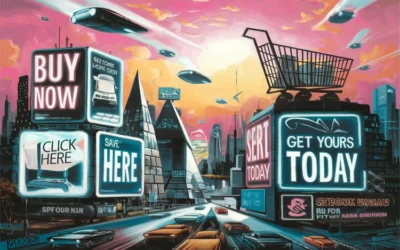Composable Thinking Powers Composable DXP Success
- Composable thinking drives real DXP results by reshaping how organizations plan, operate, and innovate.
- Composable technology fails without adaptive strategies and team-level ownership of customer experiences.
- Modular cohesion ensures teams stay aligned while innovating across customer journeys.
- Continuous composable transformation replaces outdated project-based change models.
- Success depends on embedding composable architecture principles across strategy, governance, and execution.
Digital leaders increasingly adopt composable Digital Experience Platforms (DXPs) seeking greater agility and market responsiveness. Adoption is accelerating rapidly, with 70% of organizations expected to have mandates for composable DXP technology by 2026, up from 50% in 2024.
Yet many discover a disappointing reality: investing in modular technology alone rarely delivers the promised transformation. Only 38.9% of organizations feel adequately prepared to adapt to rapidly evolving customer expectations, despite widespread technology investments. The critical missing element? A deeper shift in organizational thinking that must accompany technological change.
The Composable Technology-Operations Gap
Composable architecture promises extraordinary flexibility—discrete capabilities you can assemble, reconfigure, and adapt as customer needs evolve. However, reality often hits hard when organizations discover the gap between technological capability and operational readiness.
A technology modernization leader from a global CPG company recently shared their painful experience: “We spent millions on all these fancy composable tools. But our teams kept planning and working the same old way. In the end, we just had a bunch of expensive, disconnected martech that nobody knew how to use together.”
We’ve seen this story play out countless times. Instead, fancy new martech gets installed, but nothing changes. On the other hand, the companies that move the needle don’t stop at buying shiny tools. Rather, they roll up their sleeves and reshape how teams plan projects, how departments talk to each other, and how decisions get made. Sure, it’s messy, uncomfortable work—but it’s where the real value happens.
The Essence of Composable Thinking
Composable thinking reaches far beyond technology choices to reshape organizational DNA. Specifically, Gartner defines this through four foundational principles: modularity, autonomy, orchestration, and discovery. Consequently, it embeds these principles throughout business operations.
Architectural perspectives shift to break complex challenges into independent yet integrable components. Similarly, companies replace rigid, monolithic strategies with modular frameworks allowing rapid adaptation as conditions change.
Operations evolve from rigid standardization toward what we call “adaptive standardization.” This balanced approach preserves consistency where necessary while enabling flexibility where it creates competitive advantage. As a result? Operations that balance stability with adaptability in a volatile market.
Team collaboration undergoes perhaps the most profound evolution. In particular, research shows that transformation success requires connecting customer and employee experiences through cross-functional alignment, moving beyond traditional hierarchical decision-making. For example, one telecommunications leader completely dissolved their separate “digital marketing” and “e-commerce” departments. Instead, they created integrated experience teams focused on specific customer journeys, with marketing, technology, analytics, and product capabilities working as unified teams sharing metrics and decisions.
This approach recognizes transformation as an ongoing journey rather than a destination. Therefore, organizations abandon project-based transformation models for continuous evolution through regular market assessment, iterative planning, and flexible resource allocation.
Navigating the Composable Transformation Journey
Smart companies start with a reality check. First, they take a hard look at what’s happening with their customer experiences. Next, they spot where teams get stuck in old ways of working. Then, they figure out how quickly they can test and launch new ideas. This honest assessment shows them where they stand and what needs to change before buying a single piece of new technology.
Organizations then optimize their approach by creating flexible strategic frameworks, redesigning teams around customer journeys, and implementing balanced governance. Importantly, this preparatory work creates fertile ground for technology adoption.
Only then does technology implementation succeed. At this stage, organizations implement composable solutions aligned with strategic priorities, create integration frameworks maintaining cohesion between components, and build measurement systems tracking both immediate results and long-term adaptability. Ultimately, technology deployment becomes one element in a broader evolution of systems, processes, and people.
The Three Critical Dimensions of Composable DXP Success
Organizations that successfully implement composable DXPs maintain balance across three critical dimensions:
Strategic Foundation: Begins with modular approaches that establish clear objectives while allowing flexibility in implementation. Meanwhile, leading organizations create “adaptive strategic frameworks”—foundational principles that guide decision-making without prescribing exact solutions. Ultimately, these frameworks define the boundaries within which teams can innovate and adapt.
Operational Engine: Translates composable thinking into day-to-day execution through team structures organized around customer journeys rather than functional silos. Additionally, it requires governance models that balance central oversight with distributed decision-making. As a result, organizations that excel in this dimension demonstrate “modular cohesion”—the ability to operate independently while maintaining strategic alignment.
Innovation Platform: Establishes mechanisms for continuous adaptation and evolution. Here, cross-functional innovation teams identify emerging opportunities while rapid experimentation frameworks validate new approaches before full-scale implementation. In practice, organizations with mature innovation platforms demonstrate “adaptive velocity”—the ability to identify, test, and scale new capabilities with increasing speed over time.
Where the Magic Happens
When companies get this right—aligning their thinking across strategy, operations, and innovation—something remarkable happens. We’ve seen it firsthand.
Take the bank that restructured everything around how customers experience their services rather than internal product categories. Not only did they buy the fancy composable tools, but they also rewired how their teams worked together. The result? Their digital conversion rates significantly outperformed competitors who bought similar martech but kept their old ways of working.
Getting Real About Composable Business Success
Let’s cut to the chase. Buying new technology without changing how you think won’t move the needle much. Instead, the companies pulling ahead are rewiring their organizations from the inside out.
As you weigh your technology options, ask yourself:
Has your organization developed the composable thinking necessary to fully leverage these technologies?
Do your team structures, governance models, and operational processes align with composable principles?
Have you established the innovation mechanisms needed for continuous evolution?
The winners in this space aren’t just shopping for new tools—they’re fundamentally rethinking how they operate. Instead, they’re breaking down silos, empowering teams to make decisions closer to the customer, and building flexibility into everything they do.
The payoff? Organizations that embrace this comprehensive approach don’t just deliver incrementally better experiences—they create sustainable advantages that competitors struggle to match, even when they have access to the same technology. In today’s market, that’s the difference between leading and following.
New Knowledge
Why Martech Needs Simplicity, Not More Labels
Explore how marketing and technology leaders use composable thinking to restructure teams, empower decision-making, and outpace competitors—even with similar technology. (Reading time: 7 mins)
AI Capabilities That Transform Marketing Teams
You’ll see why top marketing teams treat AI as a strategic partner, not a magic box, and how to align tools with business goals. (Reading time: 8 min)
Martech Optimization: Best Practices for Success
If you’re optimizing your martech stack without understanding how it drives customer value, you’re wasting budget and breaking systems. Learn how clarity fuels real growth. (Reading time: 6 min)
Generative AI Transforms Marketing Teams and Strategy
AI reshapes marketing by blending automation with creativity. This article shows CMOs how to integrate AI, tackle team resistance, and build a future-ready mix of specialists and generalists. Learn to redefine roles, foster innovation, and scale impact. [Reading time: 6 min]





